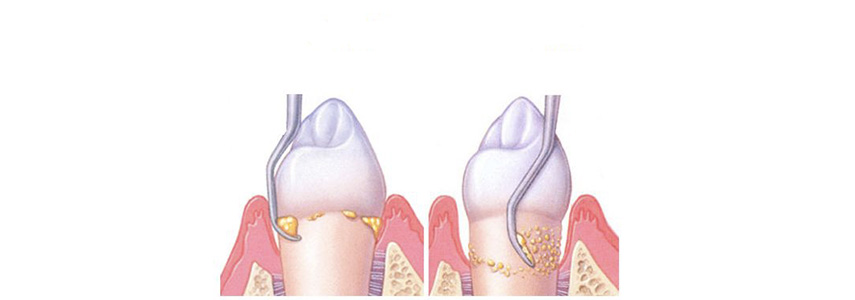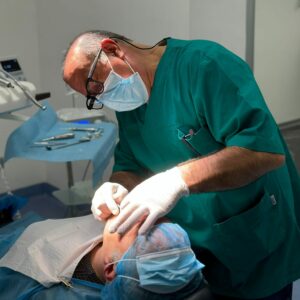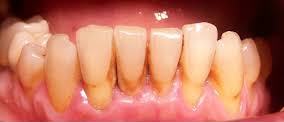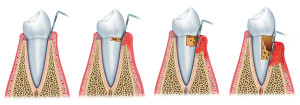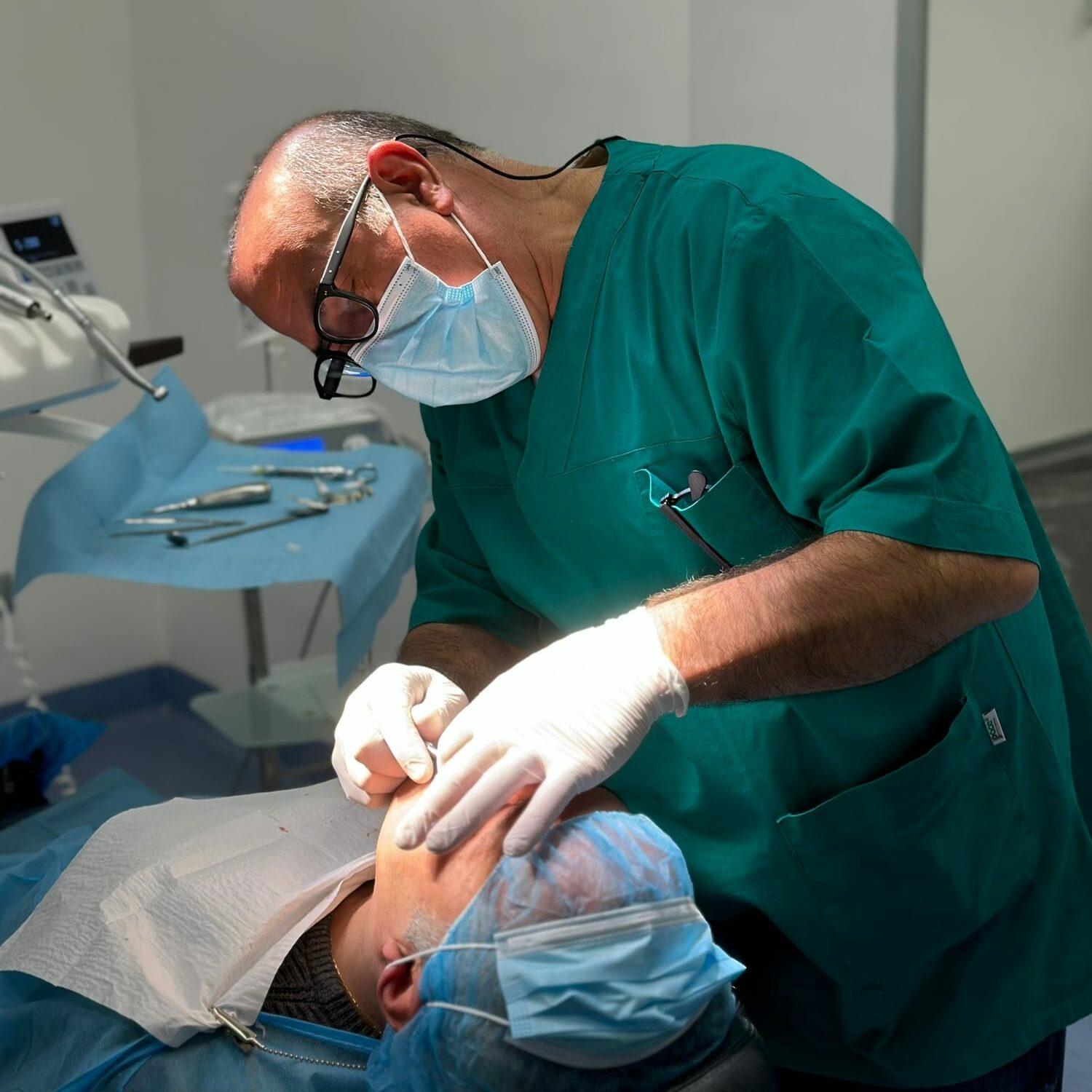The periodontal pocket is a space created between the tooth, gingiva and alveolar bone following the onset of periodontitis. The periodontal pocket can reach a depth of several millimeters depending on the severity of the infection.
How the periodontal pocket is formed
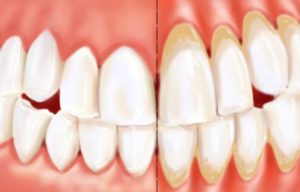 In the presence of an infection to the gums there is a progressive regression of the gum tissue, the gum in fact moves away from the tooth. In this way periodontal pockets are created, spaces in which plaque, tartar and any kind of soft residue continue to accumulate.
In the presence of an infection to the gums there is a progressive regression of the gum tissue, the gum in fact moves away from the tooth. In this way periodontal pockets are created, spaces in which plaque, tartar and any kind of soft residue continue to accumulate.
The progress of the infection can be determined from the depth of the periodontal pocket. Up to 3 millimeters in depth the diagnosis is of a gingivitis, exceeding the 3 millimeters of depth one can instead speak of periodontitis at an advanced stage.
Periodontitis involves the deterioration of the periodontal ligament, until complete detachment and tooth fall.
The instrument that allows the dentist to measure the depth of the periodontal pocket is called a millimeter periodontal probe.
How to work on a periodontal pocket
In the presence of periodontal pockets, hygiene is no longer sufficient, to remove the mounds of tartar it is necessary to contact a competent dentist who will practice the currettage, ie root planing.
The curettage technique takes its name from the curettes, surgical instruments used by the dentist to clean the root surface of tartar. Once the tartar is removed, the periodontal ligament can reattach to the root of the tooth.
The curettage, depending on the depth of the periodontal pocket, can be carried out under cover, that is without incision, or in the open, with incision of the gingival flap.
Covered curettage
When the periodontal pocket has a depth between 2.5 and 4.5 mm the dentist will almost certainly apply an overcast curettage treatment because the area of intervention is easily accessible. The cleaning of the periodontal pocket can be completed both with manual curettes and with the use of a laser curettage, in this second case local anesthesia is not performed.
Open-air curettage
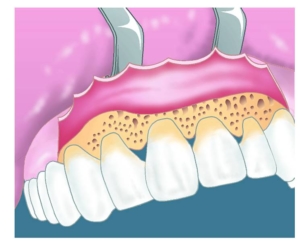 When the periodontal pocket is equal to or greater than 5 millimeters in depth, the dentist may have difficulties in surgery precisely because of the depth of the pocket. In order to clean the root of the tooth as best as possible, we proceed to an open-air curettage, incising and lifting the gingival flap, the dentist will have easy access to the affected area.
When the periodontal pocket is equal to or greater than 5 millimeters in depth, the dentist may have difficulties in surgery precisely because of the depth of the pocket. In order to clean the root of the tooth as best as possible, we proceed to an open-air curettage, incising and lifting the gingival flap, the dentist will have easy access to the affected area.
Being a microsurgery intervention, the open curettage procedure involves the following phases:
- the patient is given local anesthesia;
- the dentist cuts the gum with a scalpel or laser;
- the infected tissues are cleaned and the roots smoothed;
- the gingival flap is placed and closed through stitches.
At the end of the operation the attachment between tooth and gum will be correctly restored.
For both curettage techniques, antibiotic therapy is provided after treatment. The dentist will also provide the patient with a series of advice and recommendations on home oral hygiene and lifestyle to follow.




